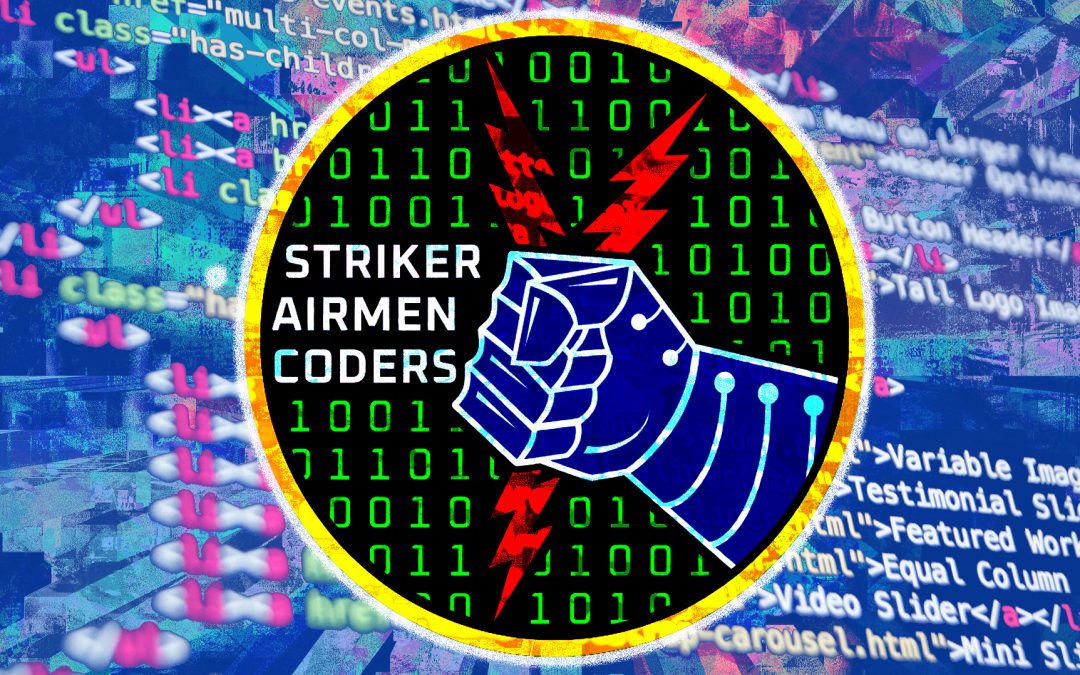Striker Airmen Coder participants presented their software prototype and data analytics results to Air Force Global Strike Command stakeholders on Nov. 22 in STRIKEWERX at the Cyber Innovation Center, Bossier City, Louisiana. The Striker Airmen Coder program equips Airmen with cutting-edge coding and data analytics training, empowering them to create impactful solutions for the command. (U.S. Air Force Courtesy Photo by Robin Nichols, STRIKEWERX)
By Sean Green | Communications Manager
BOSSIER CITY, La. — The Cyber Innovation Center (CIC) and Bossier Parish Community College (BPCC) are helping Air Force Global Strike Command (AFGSC) Airmen gain software and data skills to impact their home units, enable the AFGSC mission, and overall maintain the Department of the Air Force’s strategic superiority.
The Striker Airmen Coder (SAC) program equips Airmen with cutting-edge coding and data analytics training, empowering them to create impactful solutions for the command. CIC administers the program with curriculum provided by BPCC.
“We are blessed to continue our partnership with the AFGSC Office of the Chief Scientist to help empower the next generation of data-capable warfighters so they can innovate solutions in their day-to-day operations,” said CIC President Kevin Nolten. “This is our seventh iteration of SAC and we are excited to work with BPCC to continue creating real-world impacts.”
This year’s program culminated with SAC Airmen presenting their software prototype and data analytics results to AFGSC stakeholders on Nov. 22 in STRIKEWERX at the CIC, Bossier City, Louisiana.
One group presented the Radio Cryptography Modernization Program (RCMP) project. RCMP is a software tool that tracks tactical radio assets throughout the command, allowing a user to reference the current asset system and take inventory themselves.
“Not many others get the opportunity I’ve been given to flesh out my skills and gain access to new resources,” said Senior Airman Joel Encarnacion, 2nd Maintenance Squadron aerospace propulsion specialist. “My head is buzzing with all the new things I’ve learned and can bring back to my unit.”
A second group of software Airmen developed the Base Level Ammunition Support Tool (BLAST) application, which tracks personnel in controlled munitions storage areas. The software works by having guards scan common access cards to create a digital list.
“SAC will give me the ability to lead the next generation of Airmen by giving them the opportunity to connect with like-minded individuals in the innovation and coding communities,” said Senior Master Sgt. Jason Bullard, 2nd Munitions Squadron material flight chief.
A third group of Airmen worked on the Flight Hour Calculator data project. This will eliminate the need to manually update binders of pilot, maintainer, and aircraft information by aggregating that information so it will be regularly updated for better decision making.
SAC Airmen are selected through an aptitude test before undergoing a coding and data analytics immersive boot camp for three months. They will then spend a further three months working with BPCC to execute their projects as junior developers.
“It is a wonderful idea to have an academia partner within the Air Force,” said Dr. Paul Weaver, professor of computer information systems at BPCC and subject matter expert for SAC data projects. “The collaboration and partnerships that were developed will allow us to build and do more projects in the future so we can deliver results for the Air Force.”
Steven Turner, BPCC software development assistant professor and program director, added, “Any collaboration we can do to take our academic knowledge and help with the Airmen’s applied knowledge betters both of us. I learn about actual processes to bring into my classroom and the Airmen get to learn more about real world applications of software and coding.”


